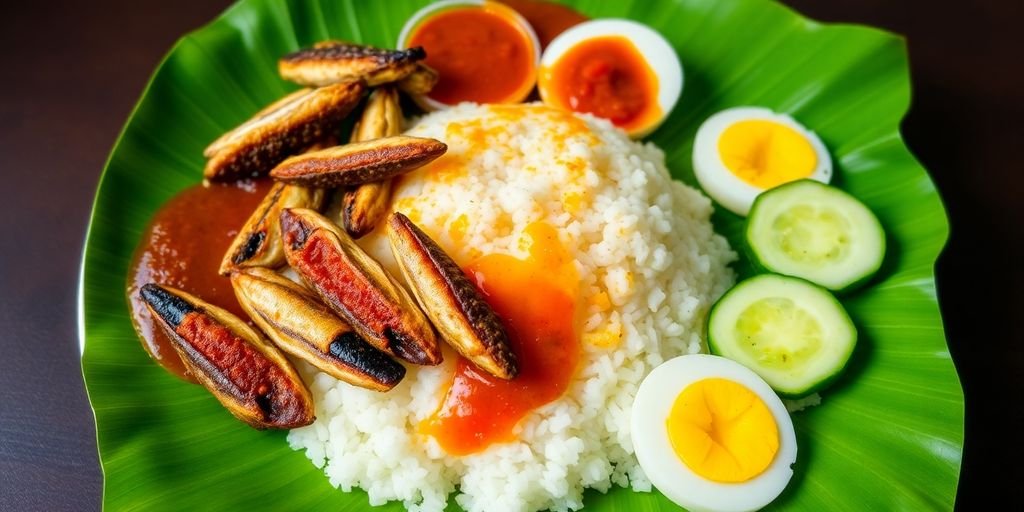Nasi Lemak is not just a meal; it’s a whole experience that captures the heart of Malaysian culture. This beloved dish, often enjoyed for breakfast, showcases a delightful combination of coconut rice, spicy sambal, and various sides. If you’ve never had it, you’re in for a treat. Let’s explore how to make the ultimate Nasi Lemak, celebrating its rich flavors and cultural significance.
Key Takeaways
- Nasi Lemak features coconut milk-infused rice that’s rich and flavorful, typically served with sambal and various sides.
- The dish is versatile, with regional variations and options for vegetarians or different protein choices.
- Personalizing sambal allows you to control the spice level and enhance the dish’s flavor profile.
- Traditional garnishes like lime and fried shallots add authenticity and depth to the meal.
- Presentation is key: using banana leaves and artful arrangement can elevate the dining experience.
Embracing The Breakfast Of Champions: Nasi Lemak
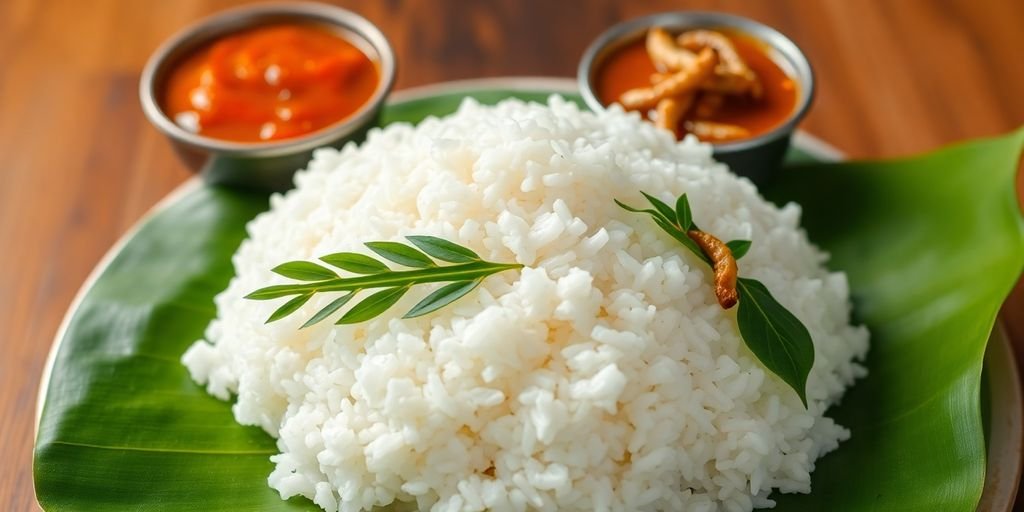
Nasi Lemak isn’t just a meal; it’s a cultural experience. For many Malaysians, it’s the ultimate start to the day. Imagine fragrant rice, cooked in creamy coconut milk, served with spicy sambal, crunchy anchovies, and other tasty sides. It’s a symphony of flavors and textures that awakens the senses. It’s more than just breakfast; it’s a celebration of Malaysian heritage.
Crafting Your Nasi Lemak Recipe
Want to make your own Nasi Lemak? It’s easier than you think! The key is in the quality of the ingredients and the technique. You’ll need rice (preferably basmati for its fragrance), coconut milk, pandan leaves (for that signature aroma), and a few other simple ingredients. Don’t be intimidated; with a little practice, you’ll be whipping up delicious Nasi Lemak in no time. Here’s a basic list to get you started:
- Rice (Basmati or Jasmine)
- Coconut Milk
- Pandan Leaves
- Salt
- Water
The Simple Joy Of Cooking Nasi Lemak
Cooking Nasi Lemak is a simple process. First, rinse the rice. Then, combine the rice, coconut milk, water, salt, and knotted pandan leaves in a pot. Bring it to a boil, then reduce the heat and simmer until the rice is cooked and the liquid is absorbed. Fluff the rice with a fork, and you’re ready to serve. The aroma of the pandan leaves infusing the rice is simply divine. For a detailed guide, check out this nasi lemak rice recipe.
Beyond Breakfast: Nasi Lemak For Every Occasion
Nasi Lemak isn’t just for breakfast anymore. It’s a versatile dish that can be enjoyed any time of day. It’s perfect for lunch, dinner, or even a late-night snack. You can also get creative with the sides and toppings. Try adding fried chicken, curry, or even seafood. The possibilities are endless!
Nasi Lemak is a dish that brings people together. Whether you’re enjoying it with family, friends, or even strangers, it’s a shared experience that celebrates Malaysian culture and cuisine.
The Essence Of Nasi Lemak
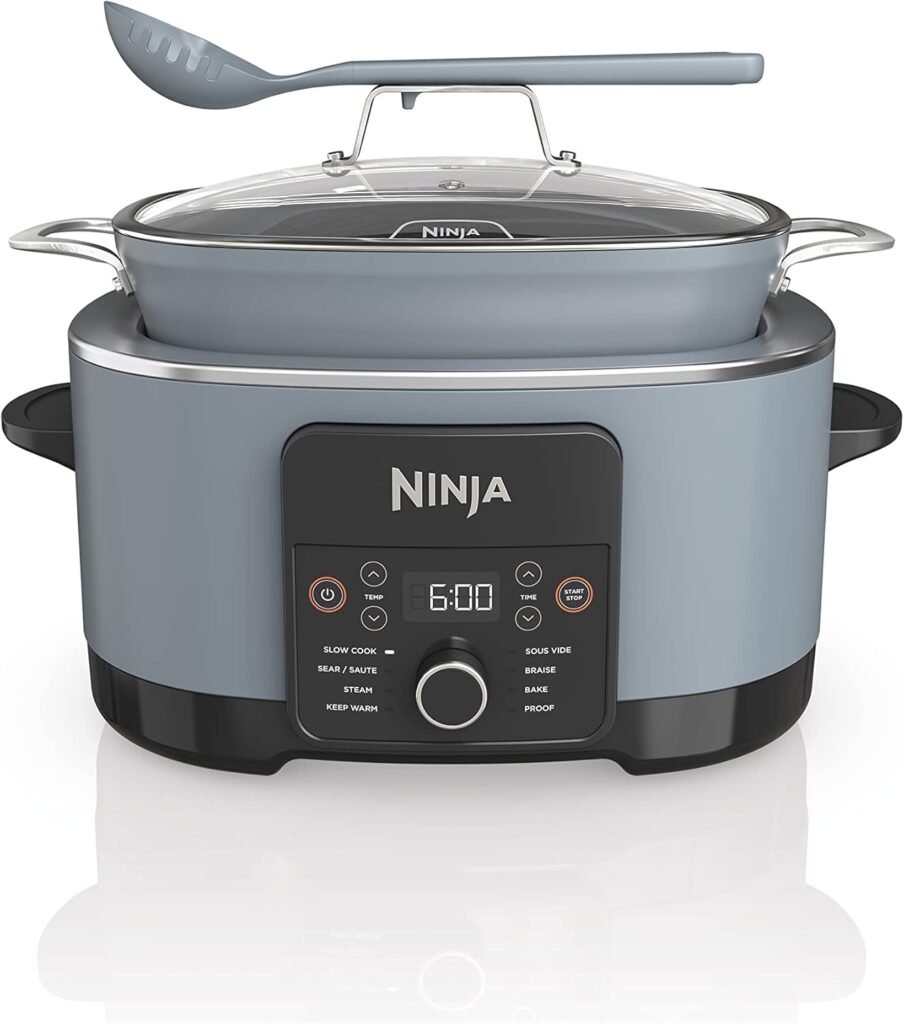
The Rich History And Cultural Significance
Nasi Lemak is more than just a meal; it’s a cultural icon in Malaysia. Its name translates to ‘rich rice,’ referring to the creamy coconut milk-infused rice that forms the base of the dish. This dish started in Malay villages where coconuts were easy to get. Over time, it has become a national favorite, showing off Malaysia’s diverse culture. You can find it everywhere, from small food stalls to big supermarkets.
Exploring Regional Variations
Nasi Lemak changes depending on where you are in Malaysia. In Johor Bahru, you might find local ingredients or special regional dishes served with it. This shows how adaptable Nasi Lemak is, with each area adding its own unique touch. Regional variations are a testament to the dish’s versatility.
- Penang: Known for its tamarind sambal, which adds a tangy flavor.
- Sarawak: Offers a version with sambal belacan, rich in shrimp paste.
- Sabah: Features Nasi Lemak with seafood, reflecting its coastal location.
The best part about Nasi Lemak is how different it can be. It’s a dish that keeps changing because of the many different tastes across Malaysia.
The Role Of Sambal In Nasi Lemak
Sambal is a must-have in Nasi Lemak. It’s a spicy chili paste that gives the dish its kick. It usually includes ingredients like chili peppers, shallots, garlic, and sometimes shrimp paste. The type of sambal can vary, with some being sweeter or tangier than others. It’s what brings all the other flavors together, making Nasi Lemak so tasty.
Here’s a simple breakdown of common sambal ingredients:
| Ingredient | Purpose |
|---|---|
| Chili Peppers | Adds heat and spice |
| Shallots | Provides a savory base |
| Garlic | Enhances the overall flavor |
| Shrimp Paste | Gives a unique umami taste |
Mastering The Coconut Rice

Choosing The Right Rice
When it comes to nasi lemak, the type of rice you pick really matters. Jasmine rice is the classic choice, known for its fragrant aroma and slightly sticky texture when cooked. This stickiness helps the rice hold its shape and absorb the coconut milk well. Some people experiment with basmati, but jasmine is the way to go if you want that authentic taste. Think of it like picking the right canvas for a painting – the rice is your base, and it sets the stage for all the other flavors.
Infusing Flavors With Coconut Milk
Coconut milk is the soul of nasi lemak rice. It’s not just about adding liquid; it’s about infusing the rice with richness and a subtle sweetness. The quality of the coconut milk makes a big difference. Freshly squeezed coconut milk is the best, but good canned coconut milk works too. Don’t skimp on the fat content – that’s where the flavor is! Also, consider adding pandan leaves. These leaves give the rice a unique, fragrant aroma that’s hard to beat. You can tie them into a knot and toss them in while the rice cooks. Here’s a simple ratio to get you started:
- 1 cup jasmine rice
- 1 cup coconut milk
- 1/2 cup water
- 2-3 pandan leaves, knotted
- Pinch of salt
Cooking Techniques For Perfect Rice
Cooking the rice just right is key. You don’t want it mushy or undercooked. Here’s a method that works well:
- Rinse the rice: Rinse the rice under cold water until the water runs clear. This removes excess starch and helps prevent the rice from becoming sticky. perfecting the quintessential coconut rice
- Combine ingredients: In a pot, combine the rinsed rice, coconut milk, water, pandan leaves, and salt.
- Cook: Bring the mixture to a boil, then reduce the heat to low, cover, and simmer for about 15-20 minutes, or until all the liquid is absorbed. Don’t peek! Let the rice steam undisturbed.
- Fluff and rest: Once cooked, remove from heat and let it sit, covered, for another 10 minutes. This allows the rice to finish steaming and become perfectly fluffy. Remove the pandan leaves before serving.
The secret to great nasi lemak rice is patience and attention to detail. Don’t rush the cooking process, and make sure to use good quality ingredients. With a little practice, you’ll be making perfect coconut rice every time.
Accompaniments That Elevate Nasi Lemak
Essential Sides For Authenticity
Nasi Lemak isn’t just about the rice; it’s about the whole experience. The sides are what make it a complete and satisfying meal. You can’t just have the rice and sambal and call it a day. You need the crunch, the spice, the coolness, and the richness all working together. Here’s what you absolutely need:
- Crispy fried anchovies (ikan bilis)
- Roasted peanuts
- Sliced cucumber
- A hard-boiled or fried egg
- Of course, the sambal!
It’s tempting to load up on every side dish imaginable, but remember, balance is key. Each element should complement the others, creating a harmonious blend of flavors and textures on your plate. Don’t overcrowd the plate; let each ingredient shine.
Creative Variations To Try
Okay, so you’ve got the basics down. Now, let’s get a little adventurous. Nasi Lemak is a dish that welcomes creativity, and there are tons of ways to put your own spin on it. Instead of just a plain fried egg, why not try a balado egg or shrimp in chili sauce? Or maybe some fried chicken? Here are some ideas to get you started:
- Rendang: Beef or chicken cooked in a rich, spicy coconut gravy. This is a classic for a reason.
- Fried Chicken: Crispy, juicy, and always a crowd-pleaser. Marinate it in some spices beforehand for extra flavor.
- Sambal Sotong: Squid cooked in sambal. Adds a nice seafood element to the dish.
- Vegetarian Options: Tofu, tempeh, or even a vegetable curry can be great substitutes for meat.
Pairing Nasi Lemak With Other Dishes
Nasi Lemak is amazing on its own, but it’s even better when paired with other Malaysian favorites. Think of it as building a complete Malaysian feast. What goes well with that rich, spicy rice? Here are a few ideas:
- Teh Tarik: Sweet, frothy milk tea. The perfect way to cool down after a spicy meal.
- Satay: Grilled skewers of meat served with peanut sauce. The smoky flavor complements the Nasi Lemak perfectly.
- Roti Canai: Flaky flatbread that’s perfect for scooping up extra sambal and rice. It’s also great with curry.
| Dish | Flavor Profile | Why It Works |
|---|---|---|
| Teh Tarik | Sweet, milky | Cools down the spice, balances the richness |
| Satay | Smoky, savory, peanutty | Adds another layer of flavor, complements the spice |
| Roti Canai | Buttery, flaky | Great for scooping, adds a different texture |
Serving Suggestions And Presentation Tips
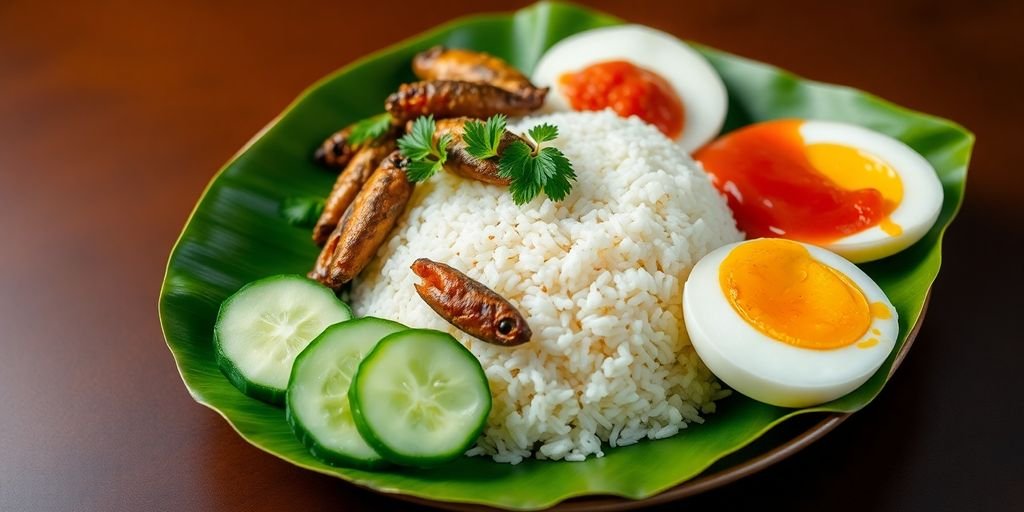
Creating A Beautiful Plate
Okay, so you’ve made this amazing Nasi Lemak, now what? It’s all about how you put it on the plate! Think of it as edible art. Don’t just dump everything in a pile. Instead, arrange the coconut rice nicely, maybe in a mound, and then place the sides around it. A little bit of effort makes a big difference. I like to use a white plate so the colors really pop.
Using Traditional Serving Methods
Want to go old-school? Banana leaves are your friend. Seriously, using banana leaves as a plate or even just as a placemat adds a super authentic touch. Plus, it looks really cool. You can also use those woven baskets, the kind you see at markets. It’s all about making it feel like you’re eating at a roadside stall in Malaysia. It’s a fun way to arrange the coconut rice.
Personalizing The Nasi Lemak Experience
Nasi Lemak is great because everyone can make it their own. Set out all the sides in little bowls and let people build their own plate. Some people love extra sambal, others want more peanuts. It’s all about letting them customize it. And don’t forget the garnishes! Fried shallots and a wedge of lime are a must.
Remember, it’s not just about the food, it’s about the experience. Make it fun, make it personal, and most importantly, make it delicious!
Nasi Lemak In Modern Cuisine
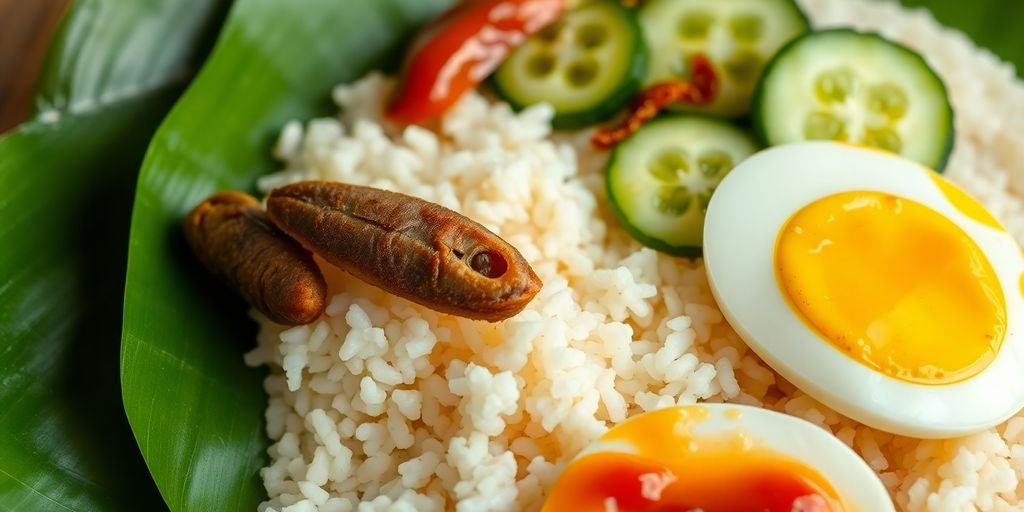
Innovative Twists On A Classic
Nasi Lemak isn’t stuck in the past; it’s constantly evolving. Chefs and home cooks alike are finding new ways to present this beloved dish, pushing boundaries while still respecting its core flavors. You might find Nasi Lemak ice cream, Nasi Lemak burgers, or even Nasi Lemak flavored chips. It’s all about taking those familiar tastes and textures and putting them in unexpected forms.
Nasi Lemak In Restaurants
From humble street stalls to fancy restaurants, Nasi Lemak has a place everywhere. You can find it served in traditional banana leaf wraps at roadside vendors, or plated with artistic flair in upscale dining spots. Restaurants often experiment with premium ingredients, like free-range chicken or imported seafood, to create a more luxurious version of the dish. The price points vary wildly, but the underlying love for Nasi Lemak remains the same.
The Rise Of Nasi Lemak Food Trucks
Food trucks have become a popular way to enjoy Nasi Lemak on the go. These mobile kitchens bring the dish to different neighborhoods and events, making it more accessible than ever. They often offer creative variations and quick service, perfect for a fast and tasty meal.
Food trucks are great because they can test out new ideas and reach a wider audience. It’s a fun way to experience Nasi Lemak in a casual setting.
Here’s a quick look at some common food truck offerings:
- Classic Nasi Lemak with fried chicken
- Nasi Lemak with rendang
- Vegetarian Nasi Lemak with tofu and tempeh
- Nasi Lemak spring rolls
Celebrating Nasi Lemak
Nasi Lemak As A Cultural Icon
Nasi Lemak isn’t just food; it’s a symbol. It represents Malaysian identity and heritage. You’ll find it everywhere, from fancy restaurants to humble street stalls. It’s a dish that brings people together, regardless of background. It’s comfort food at its finest, a taste of home for many Malaysians, no matter where they are in the world. It’s a reminder of simpler times, family gatherings, and the rich culinary traditions of the country. It’s more than just a meal; it’s a cultural experience.

Festivals And Events Featuring Nasi Lemak
Throughout the year, various festivals and events celebrate Malaysian cuisine, and Nasi Lemak often takes center stage. These events showcase the diversity of Nasi Lemak, with vendors offering unique variations and interpretations of the classic dish. It’s a chance to sample different styles of customizing the sambal and appreciate the creativity of local chefs. These festivals are a great way to experience the vibrant food culture of Malaysia and indulge in the deliciousness of Nasi Lemak.
Sharing Nasi Lemak With Friends And Family
Nasi Lemak is best enjoyed with company. Sharing a plate of Nasi Lemak with friends and family is a cherished tradition in Malaysia. It’s a time to bond over good food and create lasting memories. The act of sharing enhances the experience, as everyone can sample different components and appreciate the flavors together. It’s a simple yet meaningful way to connect with loved ones and celebrate the joy of Malaysian cuisine.
Nasi Lemak is more than just a dish; it’s an experience. It’s about the flavors, the aromas, and the company you share it with. It’s a celebration of Malaysian culture and a reminder of the simple pleasures in life.
Here are some ways to make sharing Nasi Lemak even more special:
- Organize a Nasi Lemak potluck, where everyone brings a different side dish or variation.
- Create a Nasi Lemak bar, with a variety of toppings and condiments for guests to customize their own plates.
- Share a packet of Nasi Lemak with a friend or neighbor who has never tried it before.
Wrapping Up Your Nasi Lemak Adventure
So there you have it! Nasi Lemak is more than just a meal; it’s a slice of Malaysian culture on a plate. Whether you’re whipping it up for breakfast or serving it at a dinner party, this dish is sure to impress. The creamy rice, spicy sambal, and all those tasty sides create a flavor explosion that’s hard to beat. Plus, it’s super versatile—feel free to mix and match your favorite ingredients. So grab your apron, gather your friends, and dive into the delicious world of Nasi Lemak. Trust me, once you try making it yourself, you’ll understand why it’s a beloved favorite in Malaysia.
Frequently Asked Questions
What is Nasi Lemak?
Nasi Lemak is a traditional Malaysian meal known as ‘rich rice’ because it’s made with creamy coconut milk. It’s usually served with sides like crispy anchovies, peanuts, boiled egg, cucumber, and spicy sambal.
What makes the rice special in Nasi Lemak?
The rice is cooked with coconut milk and fragrant pandan leaves, giving it a rich and aromatic taste that is key to the dish.
Can Nasi Lemak be made vegetarian?
Yes, you can make Nasi Lemak vegetarian by replacing meat with fried tofu, tempeh, or an omelette.
What is Sambal Belacan and how is it used?
Sambal Belacan is a spicy chili paste made with shrimp paste that adds heat to Nasi Lemak. You can serve it on the side or mix it into the rice.
What are some popular variations of Nasi Lemak?
Some popular types include Nasi Lemak Ayam Rendang with chicken in rich gravy, and Nasi Lemak Daging Rendang with beef.
What sides are essential for Nasi Lemak?
Key sides include fried chicken, ikan bilis (fried anchovies), roasted peanuts, cucumber slices, sambal, and a hard-boiled egg.


